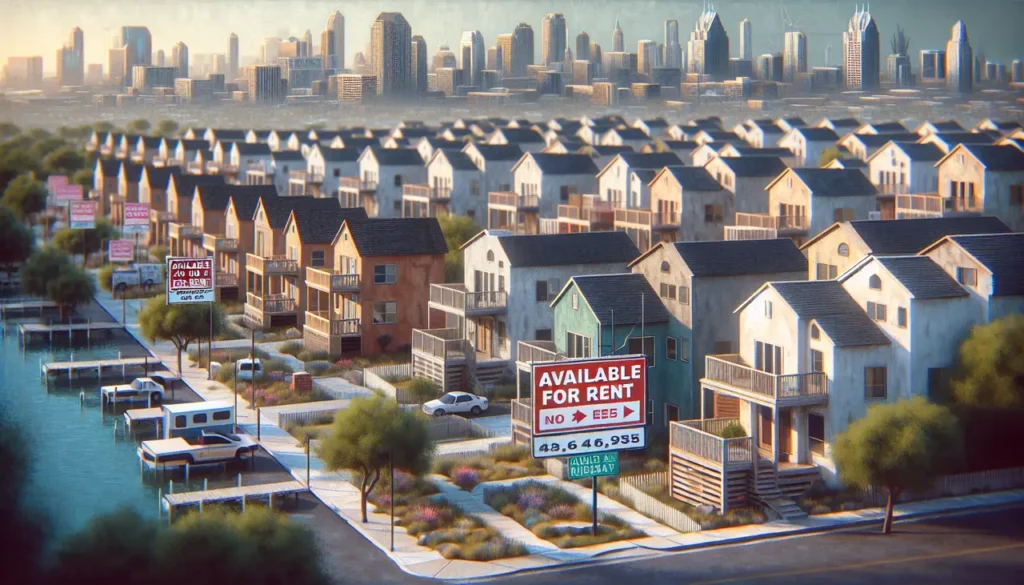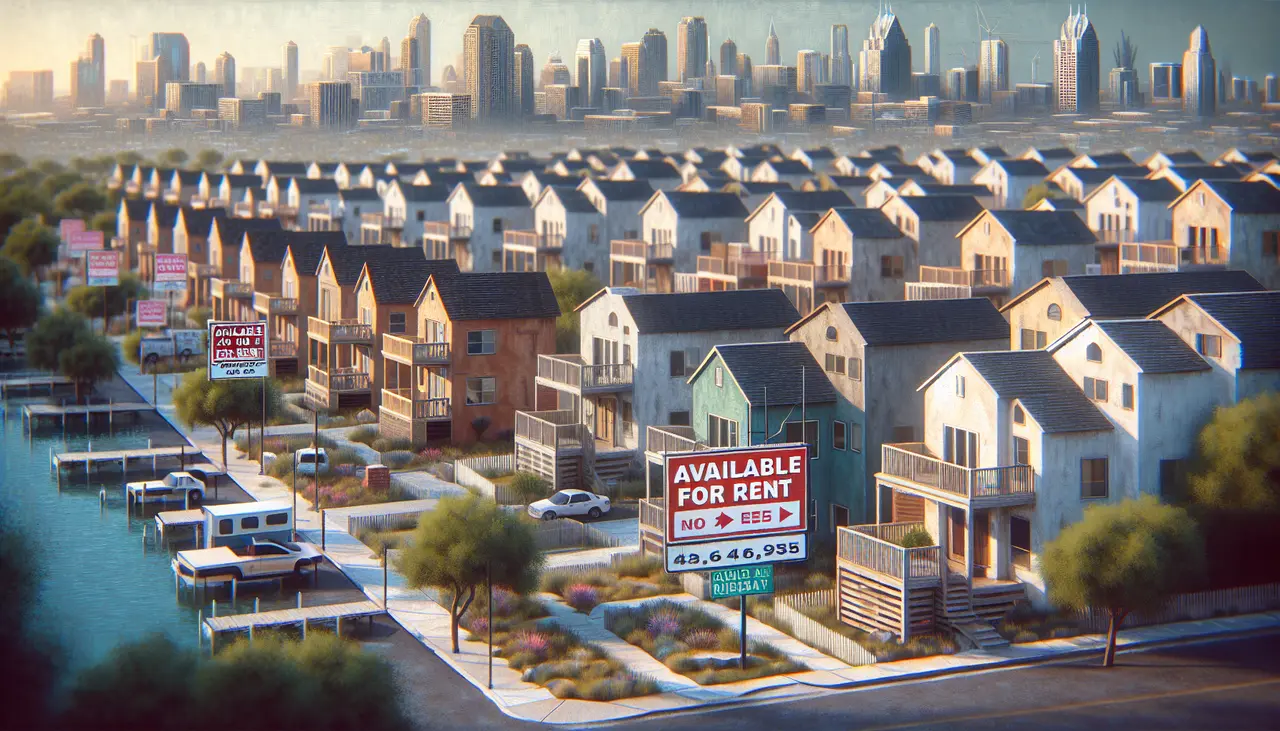Introduction to Short-Term Rental Regulations in San Antonio
Short-term rental regulations in San Antonio kick in to address the explosive growth of vacation properties. Picture this: homeowners turning their places into money-making rentals, tourists seeking cozy homes over hotels, and a city trying to keep peace in neighborhoods. San Antonio’s rules aim to balance. They divide rentals into two types. Type 1 lets you rent out your place if you live there. Type 2 is for properties without the owner on-site. Before you dream of rental income, you’d need a permit—simple yet crucial. The city also caps the number of Type 2 rentals in areas, ensuring neighborhoods don’t turn into hotel zones. The essence? San Antonio welcomes tourists but values its community’s fabric. Whether you’re a homeowner eager to host or a traveler seeking a homey stay, understanding these regulations means smoother experiences for all.
Overview of the San Antonio Short-Term Rental Market
San Antonio’s short-term rental market is booming, thanks to its rich history, cultural festivals, and vibrant culinary scene. Travelers from all over come to experience the city’s allure, making vacation properties in high demand. In this kind of market, homeowners see a golden opportunity to earn extra income by renting out their properties. However, it’s not as easy as just listing your home online. The city has put in place specific regulations to manage the growth of short-term rentals. These rules are there to ensure neighborhoods remain peaceful and to keep the housing market stable. Understanding these regulations is key for anyone looking to dive into the short-term rental game in San Antonio. Remember, while the opportunity for profit is significant, compliance with local laws is non-negotiable.
Key Short-Term Rental Regulations in San Antonio
In San Antonio, if you’re looking to dive into the world of owning or listing a vacation property as a short-term rental (STR), you better get familiar with the local regulations. First off, it’s crucial to know the city splits STRs into two types: Type 1 for properties where the owner lives on-site, and Type 2 for those where the owner does not. If you’re eyeing Type 2, gear up for a tougher ride, as these face stricter rules and limited availability.
You must get a permit, no way around it. Apply through the city, and brace yourself for fees. Initially, you’ll shell out for the application and then annually to renew. Think of it as the city’s way of keeping tabs on who’s hosting travelers.
Now, insurance. Don’t skimp on this. San Antonio demands you have proper insurance to cover your STR activities. It’s like a safety net, so when things go south, you’re not left hanging.
Noise ordinances and parking rules are your new playbook. Stick to them. Keeping the peace with the neighbors means avoiding fines and complaints that could sideline your operation.
Remember, staying on top of these regulations is not just about playing it safe. It’s about making your STR venture in San Antonio a long-term success. Warriors in the STR arena know, understanding and following the local laws isn’t just good practice; it’s essential for survival.
The Positive Impact of Regulations on Local Communities
Regulations on short-term rentals can actually be good for local communities in San Antonio. Here’s how. First, they help keep neighborhoods peaceful. When there’s a rule about how many people can stay in a rental, it means fewer large parties disturbing the peace. This makes everyone happier – both residents and visitors. Also, regulations ensure safety. They can require rentals to meet safety standards, like having working smoke detectors and safe electrical systems. This keeps everyone safer, from guests to neighbors. Lastly, these rules can boost local tourism in a sustainable way. By controlling short-term rentals, cities can avoid being overwhelmed by tourists, keeping the experience enjoyable for visitors and life manageable for residents. In short, a little bit of control ends up benefiting everyone by making communities safer, quieter, and more enjoyable to live in and visit.
Effects of Short-Term Rental Regulations on Property Owners
New regulations mean new rules for property owners. Anyone thinking of renting out their place in San Antonio as a vacation spot needs to listen up. The city’s got a whole list of dos and don’ts that could hit your wallet if you’re not careful. First off, you’ve got to get a permit. No permit, no renting—it’s that simple. This isn’t just a piece of paper; it means your place has to meet specific standards that the city sets. Also, there’s a cap on how many short-term rentals can be in one area. So, if your neighborhood’s full up, you might be out of luck. Let’s talk taxes. Yep, just like a regular business, short-term rentals have to pay taxes too. This includes state sales tax and local hotel occupancy taxes. If you skip out on these, you’re asking for trouble with the tax man. Finally, noise and party rules are in play here. Your guests can’t disrupt the peace, or you’ll hear about it, possibly in the form of fines or worse, losing your permit. All this means you need to be on top of your rental game. Ignoring the rules isn’t an option unless you fancy a headache. Keep it straight, and renting out your place can still be a smart move.
Navigating Compliance: What Property Owners Need to Know
San Antonio has rules that vacation property owners must follow. If you’re renting out your place, listen up. First off, you need a permit. No ifs, ands, or buts. Get your place checked, apply, and pay the fee. Costs? Depends on your property type. San Antonio splits short-term rentals into two buckets: Type 1 for renting out part of where you live and Type 2 for rental spots that aren’t your pad. Type 2 spots are tougher to get a permit for because there’s a cap on how many the city allows.
Noise, parking, and safety are big deals too. Keep your guests in check. Neighbors don’t like being disturbed. Also, you have to collect hotel taxes from your guests and send them to the city. Skip this, and you’re asking for trouble. Keep records of all your bookings, earnings, and taxes paid. Inspections can happen, and the city can ask to see your records.
It’s a fair bit of work, but staying on the right side of the law means no nasty surprises. Do your homework, stay organized, and keep everything above board. That’s the drill for keeping your short-term rental in San Antonio hassle-free.
The Role of Short-Term Rentals in San Antonio’s Tourism Industry
Short-term rentals play a big part in how San Antonio’s tourism industry thrives. Think about it. Every year, tons of people flock to this vibrant city, eager to explore the Alamo, stroll along the River Walk, or experience one of the many festivals. Where do all these visitors stay? A lot choose short-term rentals. These places offer tourists a cozy, more personal experience, often providing a home away from home. This is a win-win. Visitors get a unique stay and a deeper dive into local life. For San Antonio, this means more tourists spending their dollars in local businesses, restaurants, and attractions, which boosts the city’s economy. So, it’s not just about a place to stay; it’s about encouraging tourism and supporting the local community. Short-term rentals are a key piece of that puzzle, making them super important for the city’s tourism vibe.
Challenges and Controversies Surrounding Short-Term Rental Regulations
Navigating short-term rental regulations in San Antonio is like walking through a minefield. The city has been trying to balance the needs of homeowners wanting to cash in on their properties with the concerns of neighborhoods feeling the downside of transient guests. On one hand, regulations aim to ensure safety and preserve residential areas, but on the other, they’ve sparked a fiery debate. Homeowners argue that strict rules can strangle the potential to earn from their properties. They highlight how hoops and hurdles, such as obtaining permits, adhering to zoning laws, and capping the number of rental days, eat into profits and complicate what should be a straightforward process. Meanwhile, some locals raise their voices about the peace of their neighborhoods being disrupted by a revolving door of visitors. They’re worried about noise, trash, and the loss of community feel. Amidst this tug-of-war, short-term rental platforms like Airbnb and Vrbo find themselves in the crosshairs, lobbying for more lenient regulations. As San Antonio tries to find its footing, the battle lines between profit, peace, and regulation become increasingly complex.
Case Studies: Success Stories of Regulated Short-Term Rentals
In San Antonio, regulations are changing the game for short-term rental owners, but it’s not all about restrictions. Some owners are turning these rules into success stories. For instance, one homeowner, let’s call him Joe, adapted his marketing strategy to highlight his property’s compliance with local laws, drawing in guests who value legality and safety. Joe’s rental saw a 20% increase in bookings within the first three months. Then there’s Maria, who owns a couple of units downtown. She decided to work directly with the city to ensure her properties exceeded the minimum requirements. Her efforts paid off, with a notable boost in positive reviews, mentioning how secure and well-managed her properties felt. This reputation boost did more than just increase her bookings; it allowed her to slightly raise her prices. Both Joe and Maria show that with a bit of creativity and willingness to embrace regulations, short-term rental owners in San Antonio can not only survive but thrive. Their stories prove that regulations, while often viewed as hurdles, can be catalysts for success when approached with the right mindset.
Conclusion: The Future of Short-Term Rentals in San Antonio
Navigating the future of short-term rentals in San Antonio brings both anticipation and caution. With tighter regulations, property owners must adapt swiftly or risk falling behind. These rules aim to strike a balance, preserving the charm of neighborhoods while welcoming tourists. The impact? Expect a more controlled, yet thriving short-term rental market. Those who comply with regulations and maintain high-quality offerings will stand out. As travel evolves, so too may these laws, potentially opening new doors for savvy investors. The key is staying informed and agile. Ultimately, San Antonio’s short-term rental scene could emerge stronger, more sustainable, and beneficial for both locals and visitors alike.



